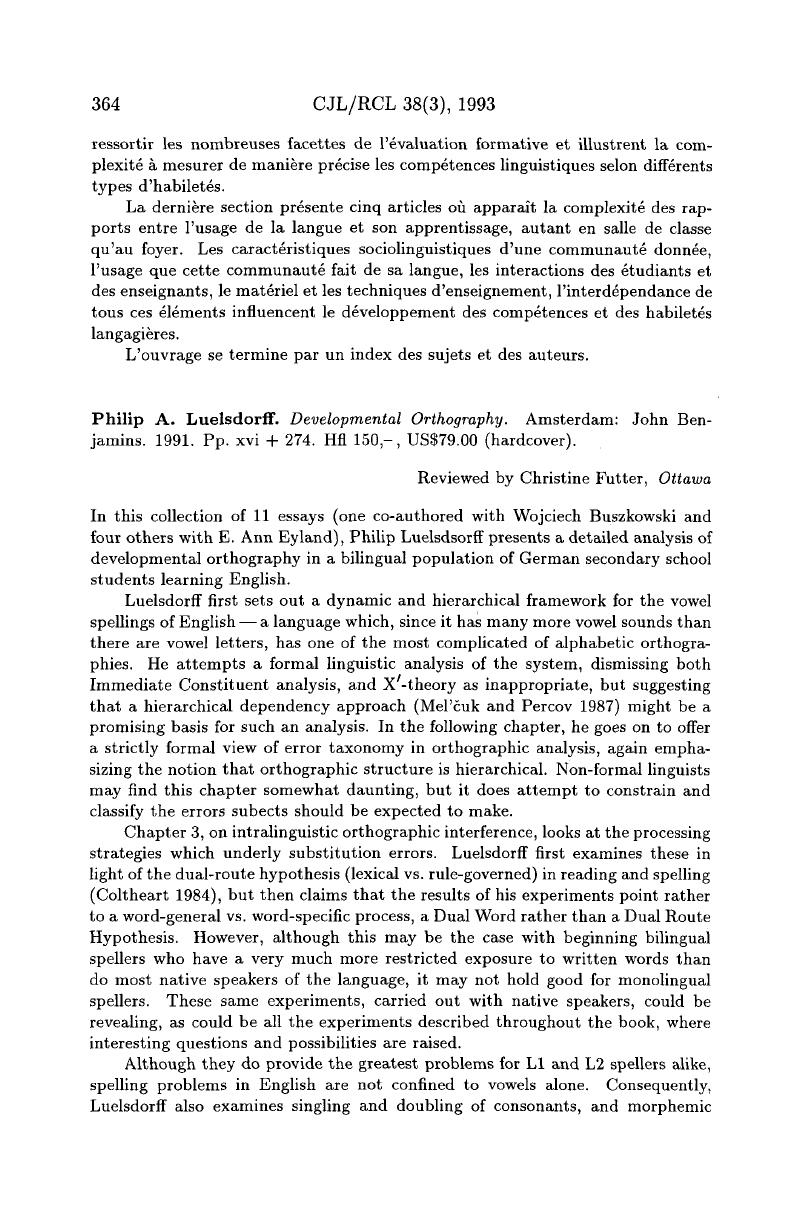No CrossRef data available.
Article contents
Philip A. Luelsdorff. Developmental Orthography. Amsterdam: John Benjamins. 1991. Pp. xvi + 274. Hfl 150-, US$79.00 (hardcover).
Published online by Cambridge University Press: 27 June 2016
Abstract
An abstract is not available for this content so a preview has been provided. Please use the Get access link above for information on how to access this content.

- Type
- Reviews/Comptes rendus
- Information
- Canadian Journal of Linguistics/Revue canadienne de linguistique , Volume 38 , Issue 3 , September 1993 , pp. 364 - 366
- Copyright
- Copyright © Canadian Linguistic Association 1993
References
Coltheart, Max
1984
Writing Systems and Reading Disorders. Pp. 67–80 in Orthographies and Reading: Perspectives from Cognitive Psychology, Neuropsychology, and Linguistics. Henderson, Leslie, ed. London: Lawrence Erlbaum.Google Scholar
Eichler, Wolfgang
1986
Zu Uta Frith. Dreiphasenmodell des Lesen (und Schreiben) Lernens. Oder: Lassen sich verschiedene Modelle des Schrifterwerbs aufeinander beziehen und weiterentwickeln? Pp. 234–247 in New Trends in Graphemics and Orthography.
Gerhard, Augst, ed. Berlin: Walter de Gruyter.Google Scholar
Frith, Uta
1986
Psychologische Aspekte des orthographischen Wissens: Entwicklung und Entwicklungsstorung. Pp. 218–233 in New Trends in Graphemics and Orthography. Gerhard, Augst, ed. Berlin: Walter de Gruyter.CrossRefGoogle Scholar
Gentry, J. Richard
1982
An Analysis of Developmental Spelling in GNYS AT WRK. The Reading Teacher
36:192–199.Google Scholar
Meľčuk, Igor A., and Percov, Nikolaj V.
1987
Surface Syntax of English: A Formal Model Within the Meaning-Text Framework.
Amsterdam: John Benjamins.
Google Scholar
Sgall, Petr
1987
Towards a Theory of Phonemic Orthography. Pp. 1–30 in Orthography and Phonology. Luelsdorff, Philip A., ed. Amsterdam: John Benjamins.Google Scholar


